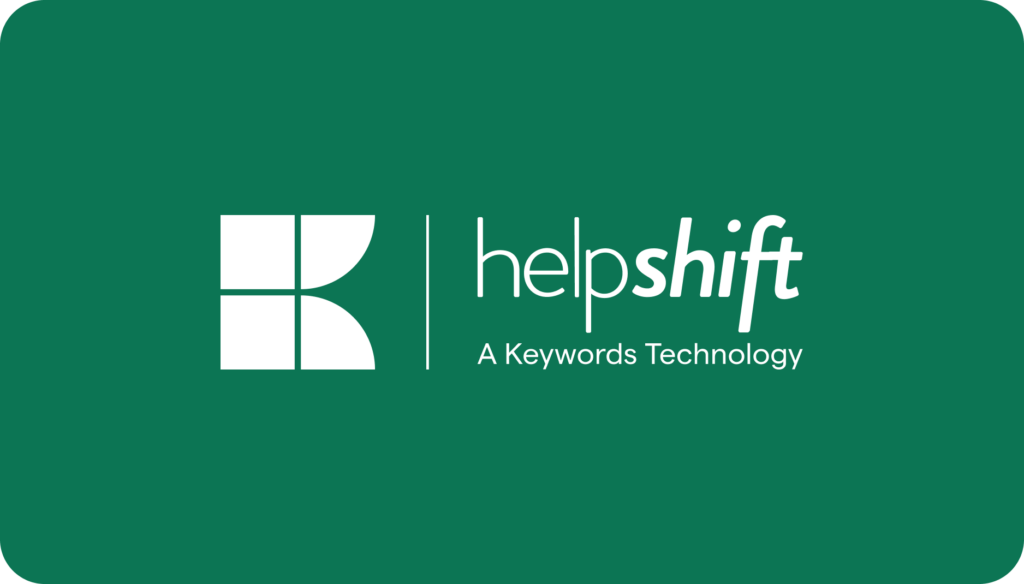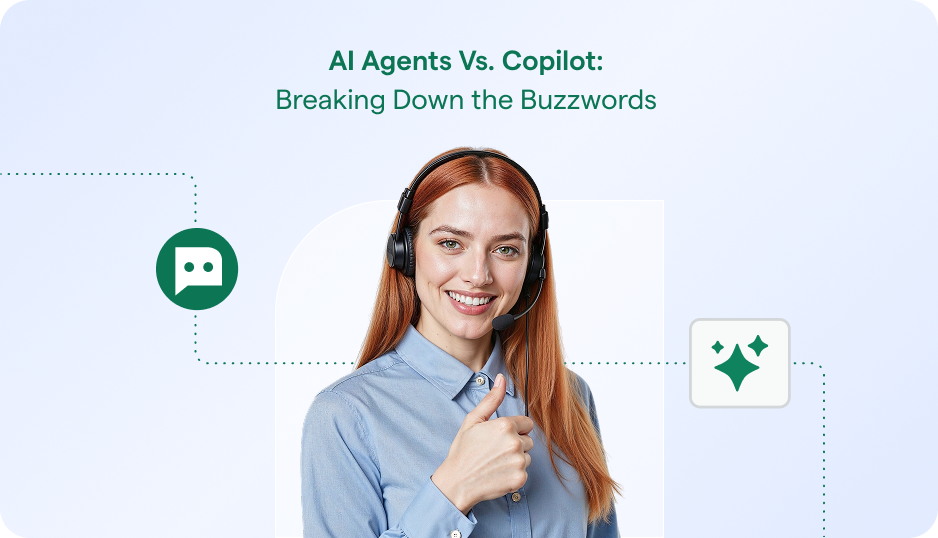Conversational AI vs Chatbot vs AI agent — which should you choose for your customer support operations? Should you integrate one, both, or all? And how does each AI tool impact customer experience?
While many businesses are integrating AI tools into their processes, the differences between these tools can sometimes be unclear. Some even think the terms mean the same thing. They don’t.
However, it’s easy to drown in buzzwords like chatbots, conversational AI, and AI Agents. Are they different? What exactly do they mean, and which AI solution would work best for your business? What are the challenges and risks associated with using AI for customer support?
These are all important questions.
This article will explore everything you need to know about chatbots, conversational AI, and AI Agents and how this technology can transform your business communication strategy.
What is Chatbot?
A chatbot is a computer program that simulates and processes text or voice messages so humans can interact with digital platforms like they would with real people. Chatbots can be as simple as software that answers basic customer queries or as sophisticated as virtual assistants that can understand the intent behind every user query.
There are different types of chatbots based on their applications.
Rule-based Chatbots
Rule-based chatbots are best for businesses that know the exact types of queries to expect from customers. The chatbots use if-then logic to create conversational automation flows that provide the expected answers to a pre-determined question. So, if a customer uses specific words found within the established language parameters, the chatbots will provide the appropriate answer.
Menu-driven Chatbots
Menu-driven chatbots use decision tree logic, where the user can pick an option from a list of menu buttons that best corresponds with their inquiry. They are best for answering based on FAQs, when users need a straightforward answer. A great use case is an online store with FAQs on how to order, how to track orders, and where to check for available discounts.
What is conversational AI?
Conversational AI is artificial intelligence that helps computers develop, process, and understand human language. Conversational AI technologies are not chatbots by themselves but form the basis of the underlying technology that powers AI-enhanced chatbots. Conversational AI enables companies to build chatbots that go beyond pre-programmed inputs to mimic human interactions and recognize diverse types of speech and text input.
| Basic chatbot | Chatbot with conversational AI | |
| Availability | Online 24/7 | Online 24/7 |
| Navigation | Button-focused navigation | Dynamic, context-based navigation |
| Intent hierarchy | If/Then statements | Multilevel intent hierarchy |
| Scalability | Limited | Unlimited |
| Scope | Narrow | Broad |
| Learning model | No self-improvement | Self-improvement over time |
| Resolution rate | Low to medium | Constantly high-resolution rate |
| Voice and conversation IVR | Absent | Present |
| Security level | Low compliance | Privacy and security-compliant |
| Omnichannel support | No omnichannel support | Consistent omnichannel support |
What is an AI Agent?
AI agents are autonomous entities that perform tasks on behalf of users. They take information from their surroundings, use it as training data, and make decisions based on it. With the increased adoption of Generative AI, these agents are becoming more capable of handling complex tasks. AI agents can also modify their behavior over time to better achieve their goals.
An AI agent is more flexible and versatile than traditional chatbots as it doesn’t rely on programmed rules for decision-making. AI agents are advanced systems with different components that make up their software. These sensors gather inputs, actuators, and processors that serve as the brain and knowledge base systems for storing data that help the AI agent complete tasks. This makes them great for complex queries that are typically difficult for rule-based chatbots.
Chatbots vs. Conversational AI vs. AI Agent: A Comparison Table
| Chatbot | Conversational AI | AI agents | |
| Capabilities | Provides basic responses based on predefined rules | They are more conversational in nature, i.e. you can follow up conversations based on previous responses etc. | AI agents can handle complex conversations and make autonomous decisions. Modern-day AI agents are powered by Generative AI, which enables them to generate relevant answers during customer interactions. |
| Level of intelligence and adaptability | Limited | Improves over time as it learns from human interactions | Autonomous learning and adaptation |
| Use of NLP and machine learning | Basic NLP for predefined responses | Advanced NLP for understanding human sentiments and context | Uses machine learning and deep learning models |
| Capabilities and limitations | Basic interactionRigid in handling complex queries | Can handle various tasks and queries |
|
| Functionality and complexity |
|
|
|
| Technology stack | Rule-based system with limited ML | Combines ML and NLP technologies | Uses advanced ML models and algorithms |
| Integration with other systems and databases | Easily integrates into messaging platforms, APIs, and websites | Integrates with CRM and ERP systems | Integrates with more complex enterprise systems |
| User experience | Transactional interactions with limited personalization | Conversational, interactive, contextual understanding | Highly personalized and contextually aware interactions. |
How do chatbots work?
Understanding how chatbots work requires an insight into the two major categories: task-oriented chatbots and conversational chatbots. Task-oriented chatbots use pre-programmed logic to generate conversational responses to user inquiries. These programs focus on performing one function, which can handle common questions without using many variables. Therefore, these are basic chatbots.
How does Conversational AI work?
Conversational AI technology works using three functions: Natural Language Processing, Natural Language Understanding, and Natural Language Generation. Here’s how they work together:
- With NLP, conversational AI models can learn several features of the human language, including grammar, sentence structure variations, sarcasm, and metaphors. This works alongside natural language understanding that focuses on the comprehension aspect of conversational AI systems.
- Next, using NLU the AI processes human language and understands user intent and context. NLU uses machine learning to differentiate between meanings to help understand human conversations. For example, the word “bark” can have different meanings in different contexts. It could refer to a dog bark or a tree bark.
- Finally, Natural Language Generation formulates contextually appropriate responses when NLP and NLU have worked on understanding the user’s input.
Advantages and Limitations of chatbots
Chatbots are easy to develop, cost-effective, and suitable for simple tasks. However, they are limited in understanding inquiries when they become more complex. Therefore, their limited understanding and flexibility can create gaps that only human agents can fill.
Advantages and limitations of conversational AI
Conversational AI technology has numerous benefits, including improved customer experience. Through conversational AI platforms, businesses can provide round-the-clock customer support, increasing customer engagement and satisfaction. Every modern customer expects that there’ll always be someone to attend to their inquiries promptly. Businesses can use this to create a more personalized customer experience as they resolve customer requests efficiently.
However, while conversational AI chatbots offer many advanced capabilities and automation, providing superior user experience and maximum cost efficiency, they also have limitations. Sometimes, these systems may not accurately replicate genuine emotional intelligence and empathy, affecting their ability to provide a humanized customer experience. Still, this can be mitigated through the use of sentiment analysis technology to improve conversational AI’s ability to respond better to customer emotions.
AI Agent Key Features
Autonomy
Autonomy is the ability of an AI agent to operate independently without needing constant human intervention. These computer programs can make decisions based on extensive training from learned patterns and autonomously execute tasks in complex environments.
Proactivity
This advanced AI bot can anticipate user needs and take the right actions to address them without explicit user commands. It can predict future events based on historical data and initiate actions that proactively enhance user experience. This is especially useful for customer service teams that need a tool with adaptive responses to boost customer satisfaction.
Learning and Adaptation
AI agents can acquire knowledge from training data and adjust their strategies based on changing environments, making them dynamic rather than rigid. Their conversational interfaces use machine learning algorithms to analyze data, identify patterns, and make autonomous decisions. They also integrate feedback loops to enhance effectiveness and accuracy over time.
Chatbots, Conversational AI, and AI agents in customer service: Explained with Helpshift
Helpshift is an AI-powered customer experience platform designed to streamline support operations with minimal human intervention. Helpshift is more than a typical chatbot. With Helpshift’s AI-powered intent classification and intelligent routing systems, customers can interact with more intelligent chatbots and get personalized answers based on their specific needs. Helpshift can handle complaints and resolves queries autonomously. For more complex issues, it seamlessly transfers them to human agents for prompt resolution.
Helpshift’s Smart Intent AI enables its chatbot to handle common queries. These chatbots are continuously trained with customer data and knowledge base content to help them fully understand complex questions and suggest contextually relevant answers based on information in your knowledge base. Our case studies reveal that Helpshift has proven to efficiently resolve 70% of customer queries. Even better, it easily transitions from AI to human agents when super complex customer issues require the human touch.
How Helpshift Uses Conversational AI to Enhance Its Chatbots
AI-chatbot toolkit
- Custom bots: These bots are designed to carry out tasks such as sending messages to a customer, requesting information, updating custom input or recommending FAQs to a customer. Custom bots leverage AI to understand customer input and are triggered at conversation points, which allows bots to perform timely actions based on the context of interactions.
- Identity bot: Identity bots cross-check a customer’s name and contact information with the information on record. If the information is incorrect, the Identity bot requests it from the customer and saves it so support agents can use it when necessary.
- Quick search bot: The quick search bot uses phrases in customers’ questions to find answers in published articles and FAQs in your app’s Help center. When customers use the knowledge base, the quick search bot searches for answers using keywords and suggests as many as three articles to the customer. This seamless experience is great for customer satisfaction.
- Feedback bots: Feedback bots engage customers post-resolution to confirm customer satisfaction and capture feedback. Capturing feedback helps you understand where to make changes and important areas of focus. These questions can be reconfigured to suit your organization’s needs and satisfy the target metrics.
AI-enabled intent detection
When customers initiate conversations, they expect their concerns to be understood and addressed effectively. With Helpshift’s Smart Intent AI, you can ensure this happens, thanks to its Smart Intent AI.
As customers interact with support channels, Helpshift’s “Smart Intents” classifies incoming tickets based on sentiment, language, and intent. The AI also detects sentiments, analyzes and summarizes the trend over time, and makes this information available to the support agents. Using this data, agents can prioritize tickets and provide empathetic support to improve customer sentiment. This eliminates manual tagging and triage chaos, enabling agents to resolve 70% of tickets in less time.
Helpshift also allows you to pre-train Smart Intent to understand issues specific to your industry. This enables bots to classify similar messages and route them to the right agents based on predefined triggers.
AI-powered answers
Helpshift uses Generative AI technology and the Retrieval-Augmented Generation (RAG) technique to generate accurate answers to customer issues. Conversational AI chatbots are trained with customer data and knowledge base articles to answer first-level questions and personalize customer experience.
Self-help AI and knowledge base
Empowering users with the right resources to find quick solutions reduces the need for customers to interact with agents. Helpshift’s self-help AI provides 24/7 automated support assistance that acts as a single source of truth for bots, agents, and customers.
With Language AI, FAQs and other support articles in the knowledge base can be translated into multiple languages. This eliminates the stress of manual translation and saves significant costs that would be spent hiring third-party translators.
Pricing
- Starter plan: $150 per month. It comes with a 30-day free trial.
- Growth plan: Customized based on your team’s needs
- Enterprise plan: Customized based on your team’s needs
Conclusion
The key difference between chatbots, conversational AI, and AI agents lies in their roles and capabilities. Chatbots operate on predefined conversation flows, mostly in text-based formats. They are great for tasks like FAQs and customer support, although they are limited in interactions.
Explore Helpshift to gain firsthand insights into how AI can streamline your support operations.
Check Delivering of Better Player Support with Helpshift and Generative AI
FAQs
1. Are all chatbots powered by conversational AI?
No, not all chatbots are powered by conversational AI. While conversational AI typically leverages NLP and machine learning for dynamic and human-like interactions, chatbots are limited by their rule-based systems and keyword recognition.
2. Can chatbots be integrated with conversational AI?
Yes, chatbots can be integrated with conversational AI to enhance their overall functionality. This is possible through the use of machine learning algorithms and NLP tools.
3. Can chatbots and conversational AI completely replace human customer service agents?
Human agents will always be useful in interactions with customers. However, chatbots and conversational AI can significantly reduce their workload by handling common customer inquiries and tasks, while complex issues are reserved for agents with a more human touch.



